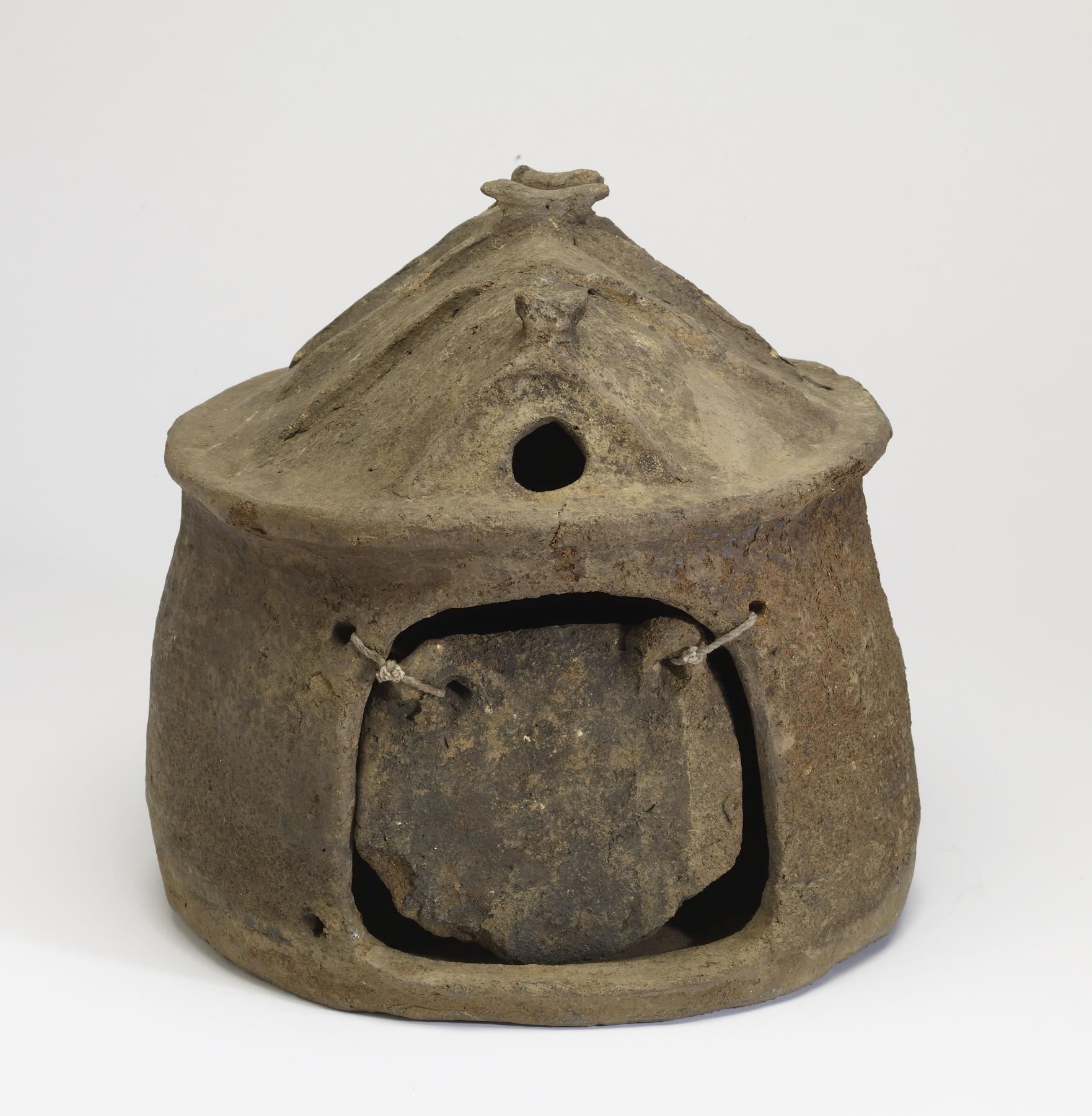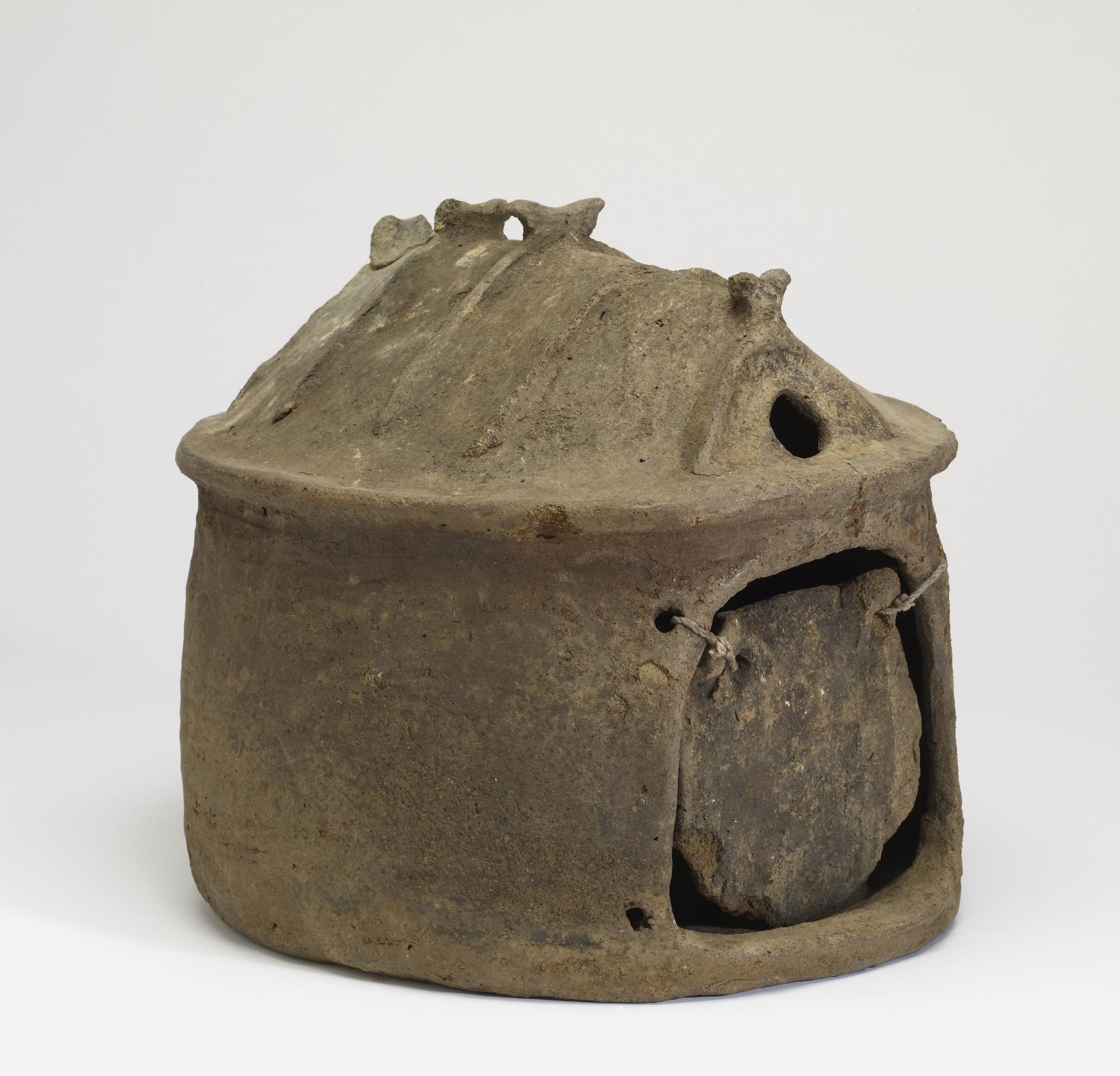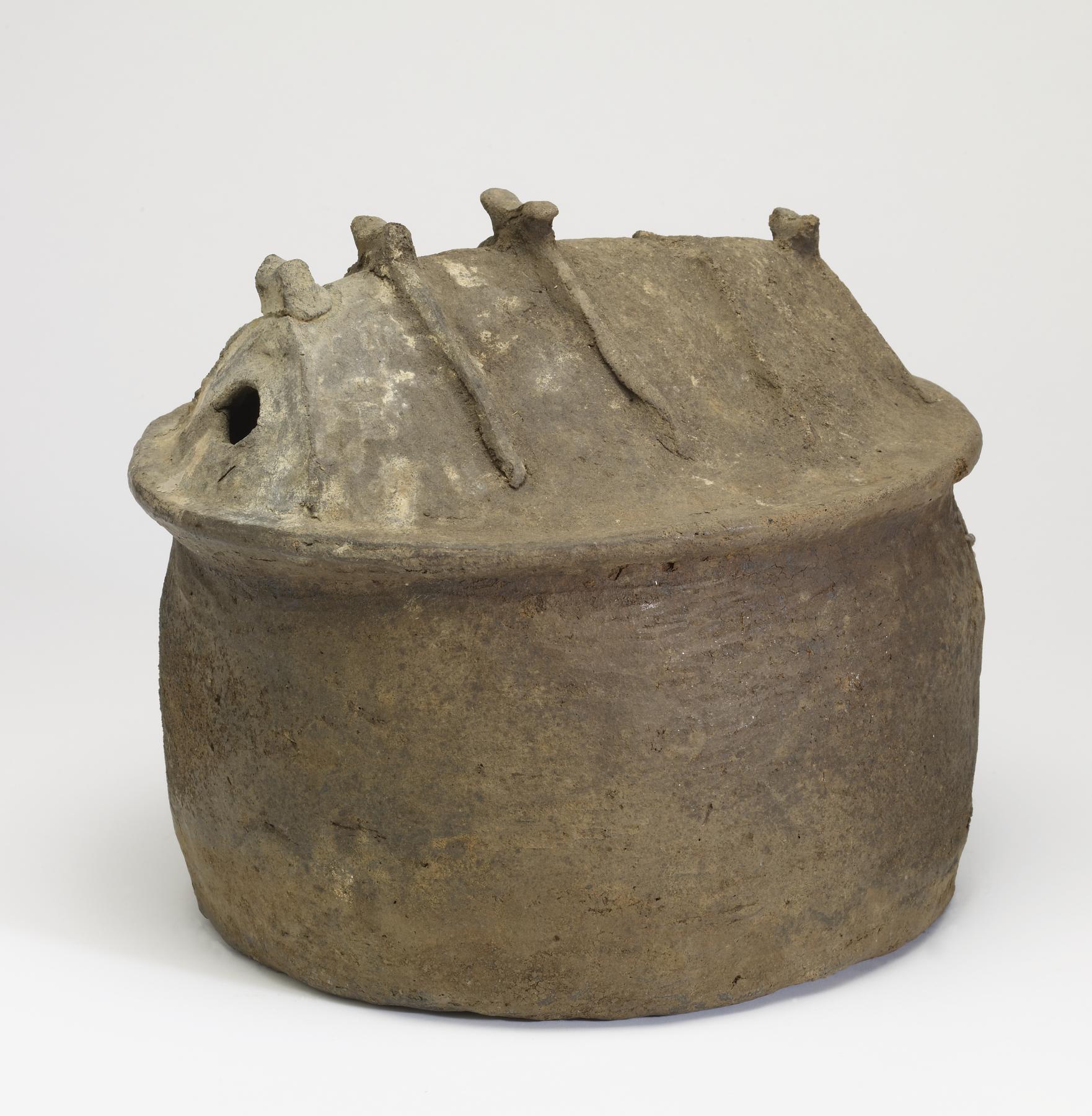Hut Urn
(Roman Empire )
Modeled after Villanovan domestic architecture, this urn takes the shape of an oval-shaped hut with a thatched roof. The roof clearly shows the eaves and indication of five ridge logs that exceed the central ridge and cross one another. There are round holes, or dormers, in both of the roof’s gables that in a home, would allow for smoke from the hearth to escape. The rounded walls of the urn are interrupted by a large square opening that was closed off by a door. Tiny holes in the urn were used to attach a simple, square terracotta door that is now damaged. This hut urn probably contained the ashes from a cremation and was then buried underground.
From the 9th through 8th centuries BCE, Villanovan culture flourished in northern and central Italy. There are no written sources from this period, but archaeological evidence offers a glimpse into the everyday life of Early Iron Age communities in Italy and reveals Villanovan culture’s many different ethnic, cultural, and political influences. The development of this rich culture led to the formation of the Etruscan cities that dominated central Italy beginning in the 7th century BCE.
Provenance
Provenance (from the French provenir, 'to come from/forth') is the chronology of the ownership, custody, or location of a historical object. Learn more about provenance at the Walters.
Sale, Christie's, Manson, and Woods, London, March 23, 1971, no. 83; Walters Art Museum, 1971, by purchase.
Conservation
| Date | Description | Narrative |
|---|---|---|
| 4/30/1971 | Treatment | repaired; other |
Geographies
Italy (Place of Origin)
Measurements
8 11/16 x 9 1/16 x 11 in. (22 x 23 x 28 cm)
Credit Line
Museum purchase, 1971
Location in Museum
Accession Number
In libraries, galleries, museums, and archives, an accession number is a unique identifier assigned to each object in the collection.
In libraries, galleries, museums, and archives, an accession number is a unique identifier assigned to each object in the collection.
48.2312






